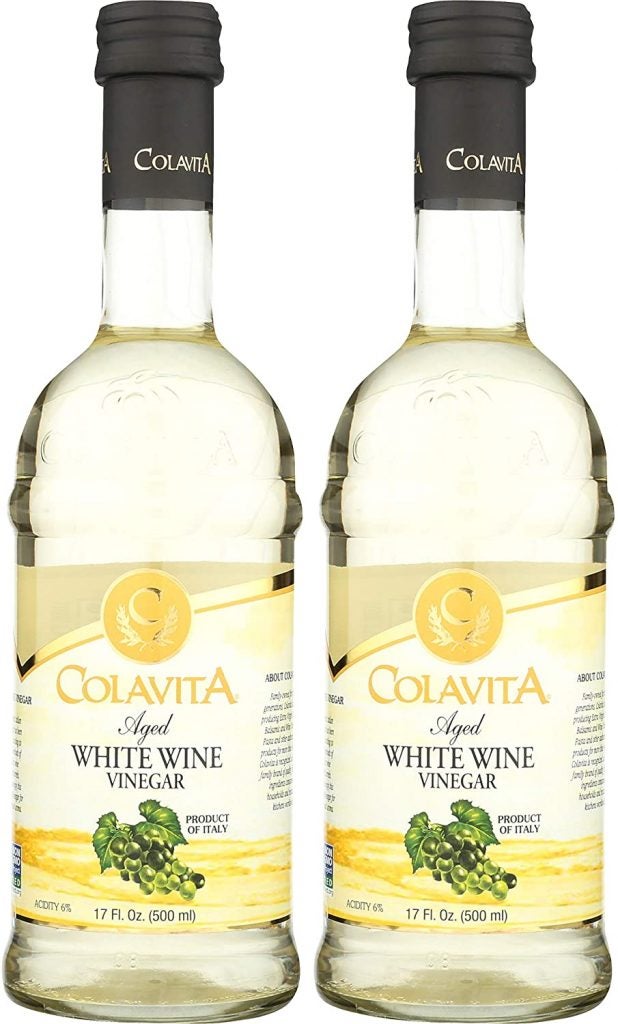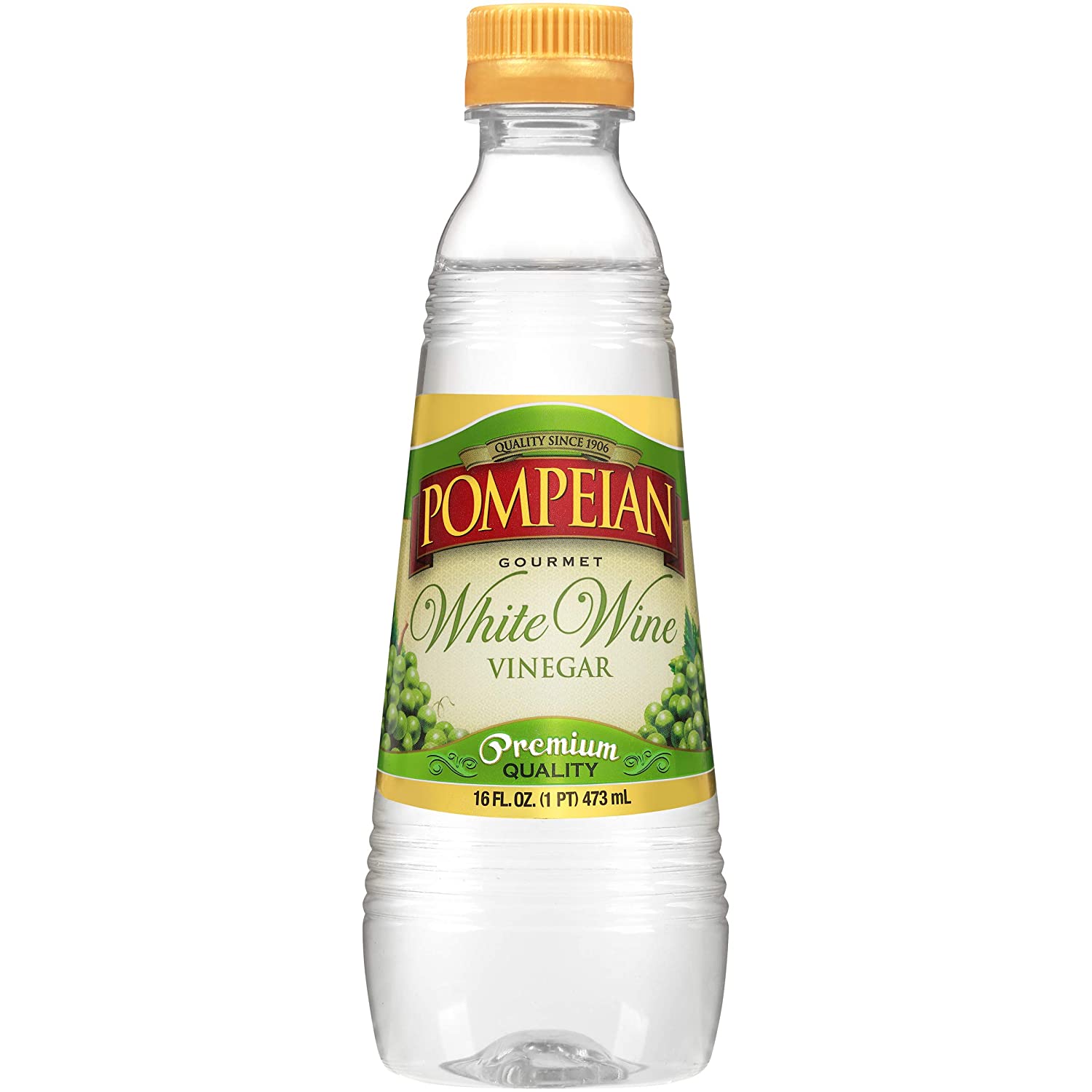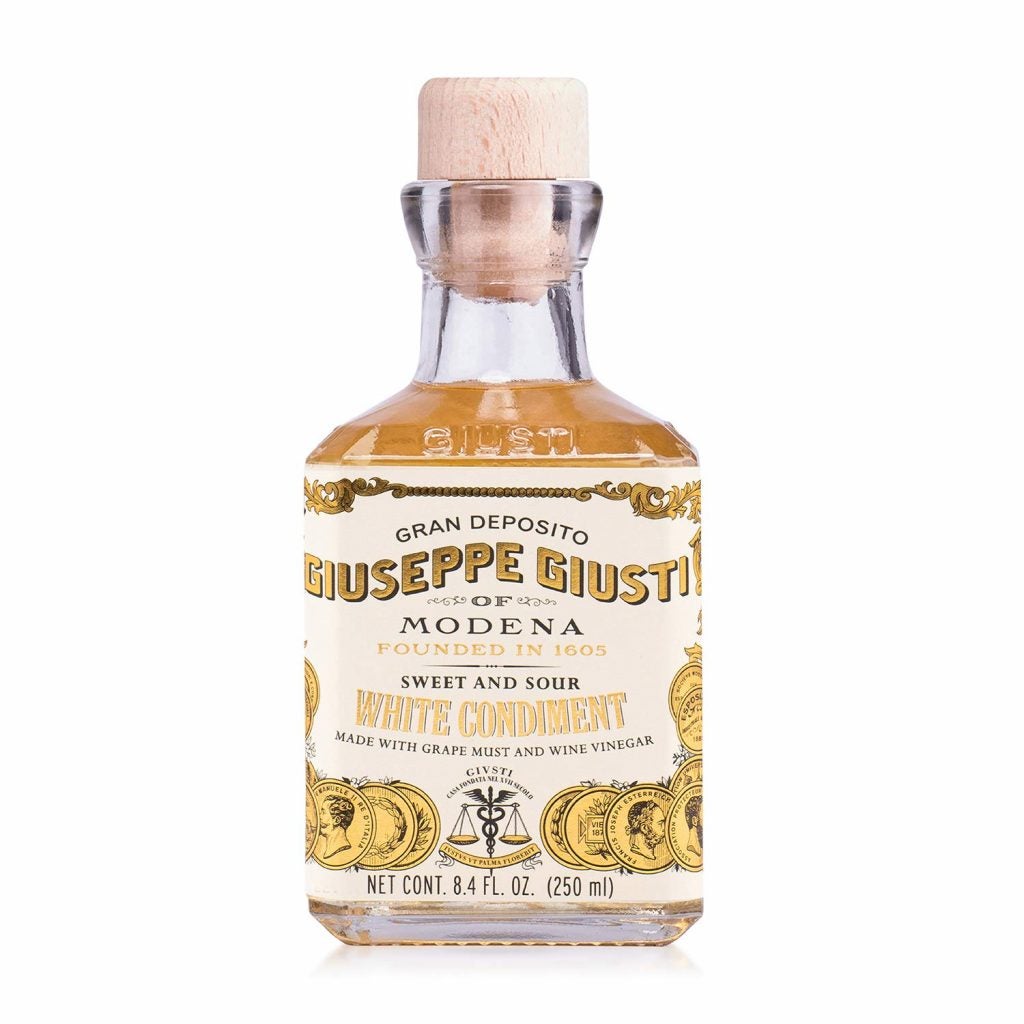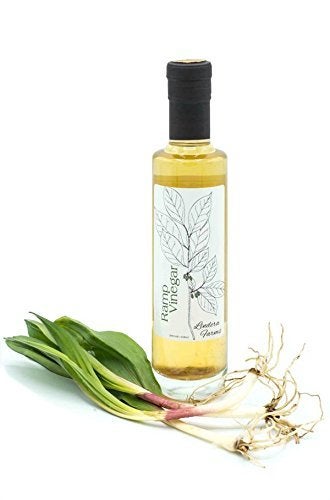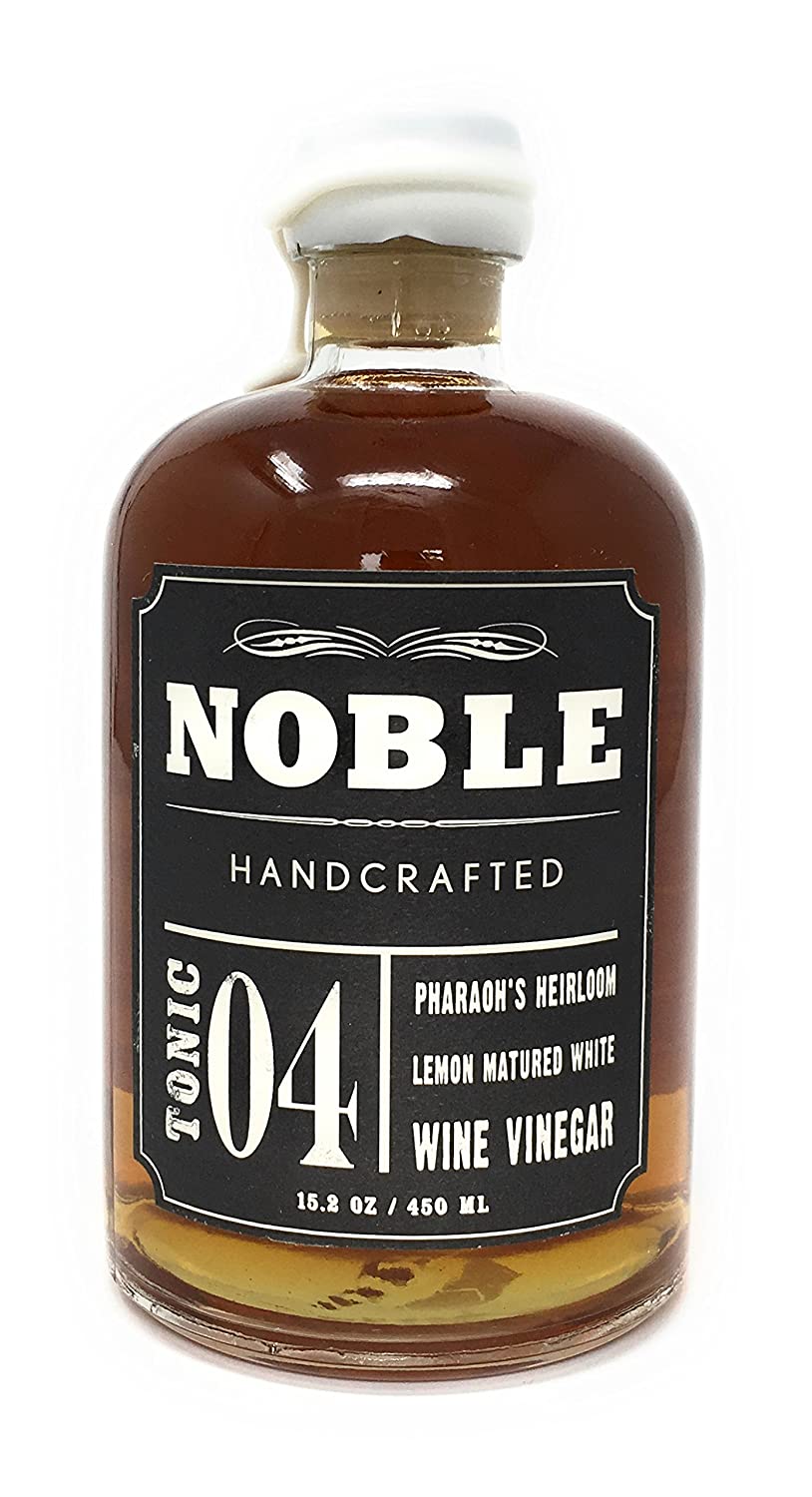Best White Wine Vinegar for Cooking
You don’t have to drink wine to be able to appreciate the culinary advantage of white wine vinegar. This seemingly simple condiment has the power to add an amazing amount of taste and flavor to many foods, from salads and sauces to meat and fish. It is also often used for braising, brining and de-glazing.
This pantry stable found in the kitchens of many home cooks is made from white wine that has been fermented and oxidized into an acid with a lightly fruity flavor, usually diluted with water to a specific acidity somewhere between five and seven percent. While most white wine vinegars are made the same way, it doesn’t mean they all taste the same. The different levels of acidity as well as the quality of the grapes used will impart various flavors. Some white wine vinegars also have flavors infused such as garlic and tarragon for a unique twist.
We feature great white wine vinegars that you can buy online. Read on to find the one that best suits your taste.
1. Best All Around: Colavita Aged
Colavita’s Aged White Wine Vinegar comes all the way from Italy in two 17 oz bottles. Crispy and tangy, this white wine vinegar is best for dressing salads of all stripes, sauces, and both fish and white meat. We also found the aged vinegar to be a fantastic addition to crusty breads in a traditional Italian style. Packing both nuance and flavor, we really can recommend this white wine vinegar enough. Just make sure to keep in mind that you are working with a 7% acetic acid composition, and will need to balance your meals accordingly to avoid being overly tart.
Pros
- GMO Free
- Barrel-aged in Italy
- Sturdy bottle, unlikely to break
- Mild and complex
Cons
- Pricey
2. Best Specialty: Forum Spanish Chardonnay White Wine Vinegar
If you like a good chardonnay, then you’ll appreciate this Spanish chardonnay white wine vinegar that you can use as a condiment in so many of your recipes, from a tasty dressing for salad to various sauces and even in some desserts.
What sets this white wine vinegar apart from other brands is the addition of 30 percent grape juice. The mix of 70 percent wine vinegar with the grape juice produces a unique tangy yet sweet balanced flavor, that is rich and delicious. Perfect for anyone who is not fond of a highly acidy white wine vinegar that has a tart bite.
This flavored version is lightly sweeter than other white wine vinegars, and doesn’t disappoint especially when added to recipes based around fish and seafood. Just a few drops will enhance most dishes, is ideal as a reduction and goes perfect with salads.
This Spanish Chardonnay white wine vinegar is sure to become a go-to pantry staple in your kitchen.
Pros:
- Sweet and tangy
- Imported from Spain
Cons:
- More expensive than other brands
3. Best Basic: Pompeian Gourmet White Wine Vinegar
You use a lot of white wine vinegar and like to make sure you have plenty on hand. You hate to be in the middle of cooking only to find out someone else used up the last drop and there is no more left. Sometimes you just can’t stop what you’re doing to get more. If you want to have enough top-quality white wine vinegar, then you’re going to love this gourmet variety that comes in a convenient pack of six.
Cultivated from grapes grown in the U.S. and Spain, this flavorful blend of white wine vinegar pairs nicely with a good olive oil for a perfect dressing for salad, and a few drops will easily enhance sauces and cooking shellfish recipes.
Gluten-free with a bright, fresh flavor, this white wine vinegar’s five percent acidity gives it a pleasant mild taste. Now you don’t have to worry about not having enough to fulfill all of your needs.
Pros:
- Gluten free
- Made from U.S. and Spanish grapes
- Affordable
- Comes in a six-pack
Cons:
- May be too mild for some tastes
- May be too many bottles for some people’s usage
4. Best Premium: Giuseppe Giusti White Wine Vinegar
Giuseppe Giusti’s premium white wine vinegar is a stylishly packaged and staggeringly complex vinegar that sits comfortably above the rest. Giusti’s vinegar is aged in both oak and ash barrels, based upon French Trebbiano grapes. As direct result this white wine vinegar is rich with floral notes and sits at a remarkably low acidity. You can easily pair the Giusti with seafood, cooked vegetables, salads and the like. With a 300+ year history this is white wine vinegar with class and panache. Still not convinced? Giuseppe Giusti’s white wine vinegar is also IGP certified. This means that the Italian government has recognized this vinegar, and its manufacturer, as linked deeply to a particular region of Italy in terms of both reputation and quality. This is the same certification that makes Parmigiano Reggiano Parmigiano Reggiano or Prosciutto Prosciutto.
Pros
- Incredibly complex flavor profile
- Highest quality ingredients
- IGP Certified
- Multi-stage de-alcoholization process
Cons
- Expensive
5. Best Original: Lindera Farms Ramp Vinegar
You love the idea of adding white wine vinegar to your favorite dishes but lately, you’ve noticed a sensitivity to grapes, fresh as well as the drinks made from them including juice and wine. If you’re looking for a product that performs like vinegar but is not made from grapes, then this vinegar may be just the ticket to give you the intense, tangy flavor of a white wine vinegar, without the grapes.
This bold-tasting vinegar is infused with ramps, an intensely flavored wild-growing member of the onion family. Lindera Farms takes ramps foraged from the woods of the Shenandoah Valley and ferments them into wines, which are then aged into vinegar. Other ingredients include honey, water and yeast.
This results in an extremely robust, versatile vinegar with notes of garlic, leek, shallots and pickled jalapeno peppers. Add it to any of your savory dishes including poultry, fish and vegetables and be wowed by the intensity of the flavor it brings to your meals.
Pros:
- Does not contain grapes
- Robust, versatile vinegar
Cons:
- More expensive than other brands
- Potent flavor
6. Best Flavored: Noble Tonic 04 Pharaohs Heirloom Lemon Matured White Wine Vinegar
As an epicurean, you’re a lover of fine food, and as a seasoned home cook, your pantry is filled with a varied collection of flavored vinegars. Most of your favorite recipes include a dash or two of vinegar and you choose the one you want depending on the mix of ingredients in what you are cooking. If you’re looking for a sweet addition to your arsenal of white wine vinegars, then consider this flavored brand.
Noble Tonic 04 is an Orleans white wine vinegar infused with Egyptian heirloom organic lemon peel. This unique white wine vinegar maintains a six-percent acidity and is characterized by its smooth, bright, sweet citrus tones.
A five-year oak barrel aged French Orleans white wine vinegar is used as the base, while the Egyptian heirloom lemon, similar to a Meyer lemon in sugar content, adds a sweet and intensely spicy flavor to the white wine vinegar, with hints of orange peel and cedar.
Smooth and subtle without that harsh bite, you can add this aromatic white wine vinegar to salad dressing, fish, meat and poultry dishes as well as to your favorite sauces.
Things to look out for:
Consider these things when looking for a white wine vinegar so you will choose one that best suits your needs:
Use: There are many ways to use white wine vinegar, and how you intend to use it may decide which brand you choose. The level of acidity is a determining factor in the strength of a particular white wine vinegar, with a higher acid level delivering a stronger, more tangy taste. That being said, regardless of the acidity level, or the addition of aromatic flavors, white wine vinegar can be used in a variety of ways. Here are some of the more common ways to incorporate white wine vinegar into your cooking.
Brining: Although brining consists of salt and water, adding a few tablespoons of white wine vinegar to the mixture is a good way to enhance the flavor of whatever you are brining. Add it to a basic brine for pickling seasonal fruits and vegetables, such as red onion and watermelon rind.
Hollandaise and béarnaise sauce: You can substitute the lemon used in these two sauces with white wine vinegar to add a level of complexity to enhance the taste.
Vinaigrette: Perhaps the most popular way to use white wine vinegar is in salad dressing. Simply whisk 1 tablespoon of white wine vinegar with 2-3 tablespoons of extra virgin olive oil, depending on how acidic you like your salad dressing to be. Add more white wine vinegar for more tang. Season it with salt and black pepper to taste for a lift of aromatic brightness and texture.
Braising: When braising something like chicken breasts, add white wine vinegar to the braising liquid for a bright acidity.
Ingredients: Most white wine vinegars are made from grapes that have been fermented into wine before turning into vinegar, but that doesn’t mean they don’t have added ingredients. Some brands have preservatives like nitrates for a longer shelf life. Others mix the white wine vinegar with fruit juice to give a sweeter taste, while some add herbs and spices like tarragon, garlic and peppers.
Acidity levels: The lowest level of acidity to be considered a vinegar is four percent. It is recommended that this only be used for basic cooking and salad dressing. Five percent acidity is pretty standard, while most white wine vinegars have between six and seven percent acidity, which is really ideal for enhancing the flavor of your favorite foods.
Cost: White wine vinegar is available in a wide range of price points and often depends on the quality of the ingredients, where the grapes come from and how they are fermented. Organic and specialty white wine vinegars will be pricier than regular brands. It’s best to work within your budget but there is enough variety that you can choose a white wine vinegar that really meets your cooking needs and your tastes.
FAQS
What is white wine vinegar? What is it used for?
White wine vinegar, like all vinegars, is made through the process of fermentation. When white wine is fermented a second time, strained, and then bottled it neutralizes the alcoholic components of the vinegar and replaces them with a mild acetic acid. This leads to a tangy and zingy taste that is an essential component of salad dressings, meat and poultry tenderization, and marinades – to name just a few applications.
What is a substitute for white wine vinegar?
Generally speaking you can substitute other vinegars for white wine vinegar, although they will have distinct flavor profiles. With that said we would suggest staying away from Balsamic Vinegar as a substitute, and not only because it’s expensive. Balsamic vinegar sweetens under heat and will produce distinct results from other vinegar sub-types. Finally, if you’re really in a tough spot then lemon juice can add a hit of the same acidity that white wine vinegar brings to the party.
Is white wine vinegar the same as white vinegar?
White wine vinegar and white vinegar are distinct and cannot be used as replacements for each other. White vinegar has a higher percentage of acetic acid when compared to white wine vinegar, up to 20% ion some cases. With that said most store-bought white vinegar caps out at 7% acetic acid to white wine vinegar’s 5-6%.
What is the difference between white wine vinegar and red wine vinegar?
In short, white wine vinegar is made with white wine while red wine vinegar is made with red wine. Both types of vinegar are made in the same way, using a ferment and strain method. However, red wine vinegar tends to have a wider variety of potential flavors and varieties. Where white wine vinegar is tangy and rich – like a spring morning – red wine vinegar is more like a cozy mid-winter night.

